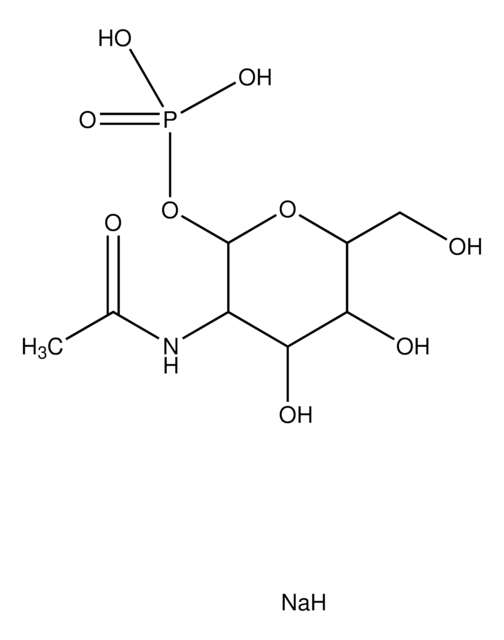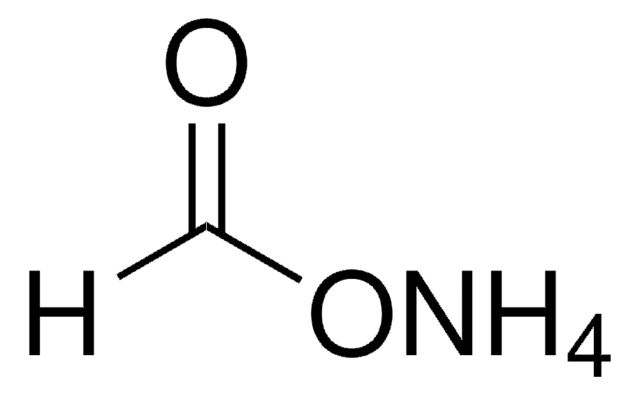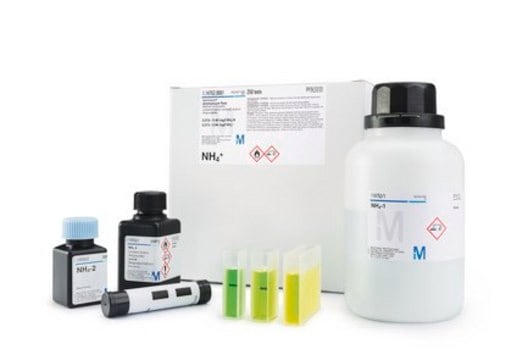A6141
Ammonium bicarbonate
ReagentPlus®, ≥99.0%
Sinônimo(s):
Ammonium hydrogen carbonate
About This Item
Produtos recomendados
densidade de vapor
2.7 (vs air)
Nível de qualidade
pressão de vapor
513 hPa ( 50 °C)
67.1 hPa ( 20 °C)
linha de produto
ReagentPlus®
Ensaio
≥99.0%
forma
powder or crystals
pH
7-8.5 (25 °C, 79.1 g/L)
cadeia de caracteres SMILES
N.OC(O)=O
InChI
1S/CH2O3.H3N/c2-1(3)4;/h(H2,2,3,4);1H3
chave InChI
ATRRKUHOCOJYRX-UHFFFAOYSA-N
Procurando produtos similares? Visita Guia de comparação de produtos
Descrição geral
Aplicação
- To derivatize histone proteins from human monocyte-derived macrophages (MDM) by propionylation.
- Destaining of silver-stained proteins in polyacrylamide gel bands during the peptide mass profiling using a mass spectrometer.
- Digestion of proteins isolated from Xenopus egg extracts in coomassie blue-stained gel bands during the analysis of microtubule-binding proteins.
Informações legais
Palavra indicadora
Warning
Frases de perigo
Declarações de precaução
Classificações de perigo
Acute Tox. 4 Oral
Código de classe de armazenamento
13 - Non Combustible Solids
Classe de risco de água (WGK)
WGK 1
Certificados de análise (COA)
Busque Certificados de análise (COA) digitando o Número do Lote do produto. Os números de lote e remessa podem ser encontrados no rótulo de um produto após a palavra “Lot” ou “Batch”.
Já possui este produto?
Encontre a documentação dos produtos que você adquiriu recentemente na biblioteca de documentos.
Os clientes também visualizaram
Nossa equipe de cientistas tem experiência em todas as áreas de pesquisa, incluindo Life Sciences, ciência de materiais, síntese química, cromatografia, química analítica e muitas outras.
Entre em contato com a assistência técnica






